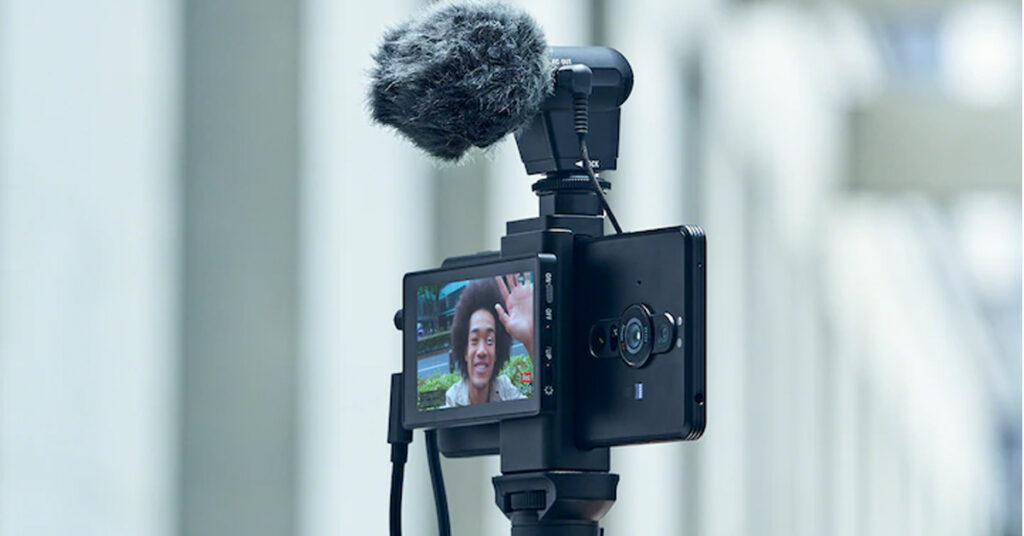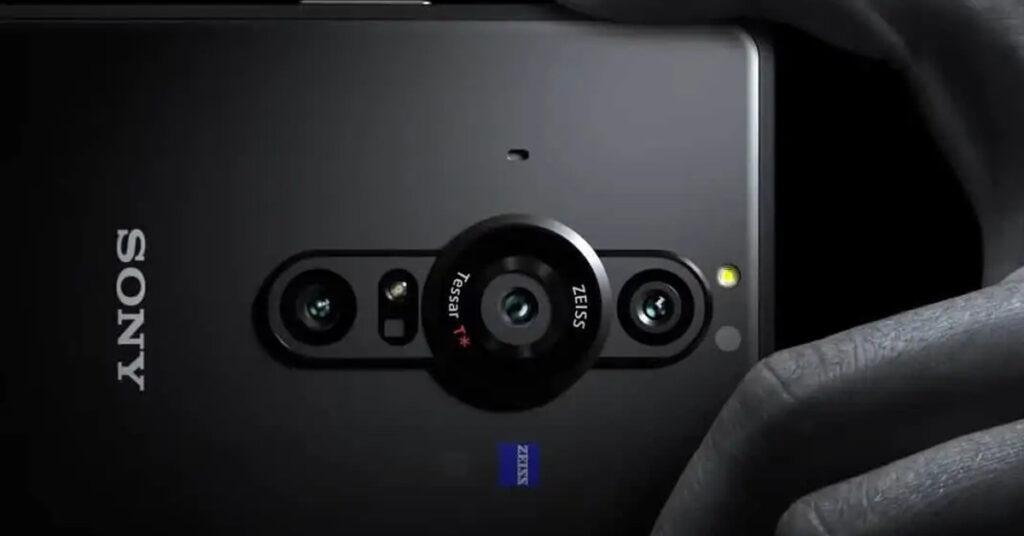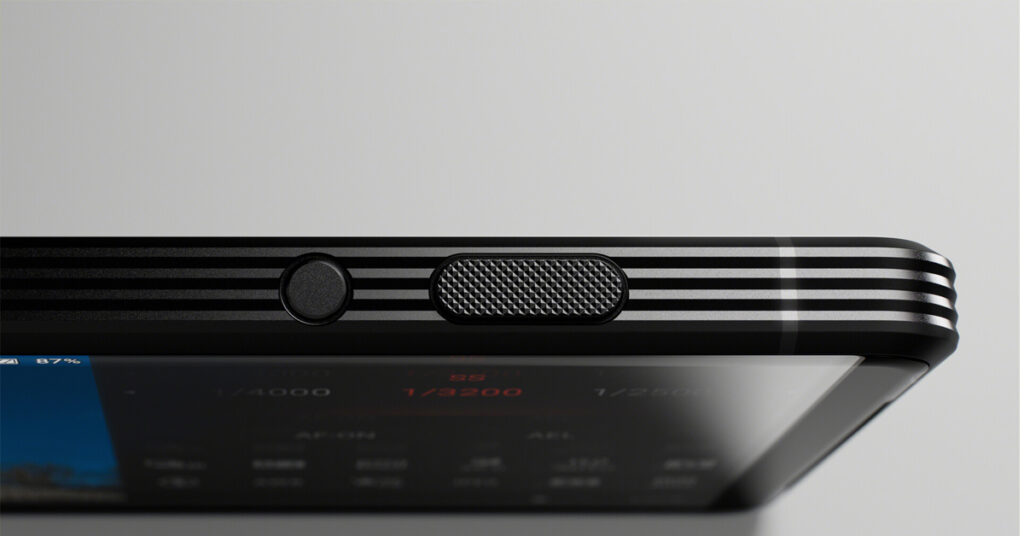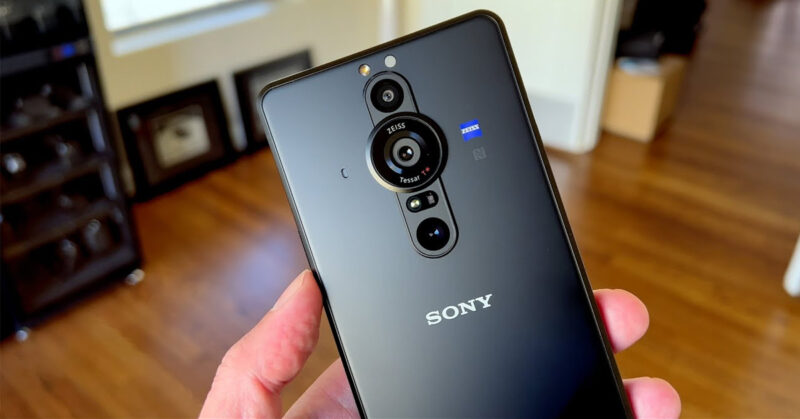Sony is ready to make your smartphone wish come true if it had a camera that took precedence over the typical phone features. Bring your camera to the next level with the Sony Xperia Pro-I. Does this phone make the ideal camera phone?
Even though it isn’t closely as expensive as the $2,499/£2,299 Xperia Pro, the $1,799/£1,599 smartphone is still quite expensive. Sony’s Xperia 1 III phone doesn’t have a periscope lens and it doesn’t have wireless charging. Has this crippled Sony’s new smartphone out of the box, or is its main camera going to make it a compelling option for photographers?
In the sony Xperia Pro-I CAmera, Sony squeezed in an Exmor RS BSI CMOS sensor that already appeared in the RX100 VII camera, but there is a catch. As a result, the output is capped at 12-megapixels despite the sensor’s ability to capture images with 20,1-megapixel resolution.
Its design features the same long sides, flat front, and flat back seen on the Xperia 1 family of smartphones. Xperia 1 III also includes a headphone jack, and the bottom of the gadget has a USB-C port.

In terms of the phone’s frame, it’s flat but textured, with striations extending around its edges, giving the phone a ribbed appearance. The matte blasted aluminum frame of the Xperia Pro-I Design makes it easy to hold. It is possible to achieve a certain degree of grip without rubberizing the finish, which may compromise the quality of the end product.
There are three cameras on the phone, with the main one in the center and two others at either end. Zeiss branding is on the device, as well as a time of flight (ToF) camera.
The launch of Sony’s new phone just in time to compete against the iPhone 13, Pixel 6, and other new models.
It hasn’t been uncommon for cameras to take on more importance in recent years, especially as new lenses and arrays are constantly improving. Honestly, it’s often the only improvement. The Xperia Pro-I takes this trend one step further by giving a lot of attention to its camera system.

In regards to the specifications of a smartphone that prioritizes photography over other functions, such as a phone, what are they? Honestly, it’s not that bad. Despite the fact that hardcore smartphone power users might not be impressed, the device provides the most basic features that a typical consumer would expect from a smartphone.
Sony’s Xperia Pro-I features a 6.5-inch OLED display with a resolution of 3840 x 1644 and a somewhat narrow aspect ratio of 21:9. Support for sub-6 GHz 5G and 4G networks is provided by the Qualcomm Snapdragon 888 5G processor. A fast-charging 4500 mAh battery keeps everything running, while 12 GB of RAM and 120 Hz refresh rate also contribute to its performance. You can even connect headphones via the 3.5mm jack. It should make connecting accessories and microphones easier.
To sum it up, we can say that the specs of the phone aren’t all that bad. It is true that the chip is slightly behind in terms of processing power compared to the latest iPhone or Pixel chips, but there are plenty of other features that are designed to keep things up to date.
Next, let’s move on to the most important part of the show: The camera. Why is it so integral to the Xperia Pro-I smartphone that it contributes so much to it? What exactly makes it so unique? As a matter of fact, Sony has made camera technology for a long time; it should be good, right? Let’s have a look.
Image sensors on the device are of the 1.0 type. As with the RX100 VII camera, this sensor uses autofocus phase detection and delivers wide dynamic ranges and low-light performance. It typically produces 12-megapixel images but can reach up to 20 MP. Three 12 megapixel cameras are located at the rear of the phone, including an ultrawide and telephoto lens. An 8 MP front-facing camera is located on the front.

According to Sony, potential users shouldn’t worry about the lower megapixel count because the Xperia Pro-I has been designed to maximize pixels. So it does not need a large MP number to achieve the same level of detail as the competition.
In addition, the device has a 24 mm primary lens with a dual aperture and can create true bokeh effects (instead of those produced digitally). It is equipped with a BIONZ X imaging processor that enables burst shooting at up to 20 frames-per-second (FPS). Additionally, it can shoot 4K video at 120 frames-per-second.
It’s easy to overlook the Xperia Pro-I at first glance. However, it’ll hold its own in the smartphone world for quite some time. The camera looks to have been carefully designed for efficient performance without reinventing the wheel, and its specs are more than reasonable. Can it replace a dedicated camera phone? Without seeing some camera tests, it’s hard to say whether the camera is on par with Sony’s claims, but if it is, it may be a great companion for those who need less from their smartphone but want to take lots of pictures. This article should at least provide you with a better idea of what this camera-focused smartphone has to offer.

